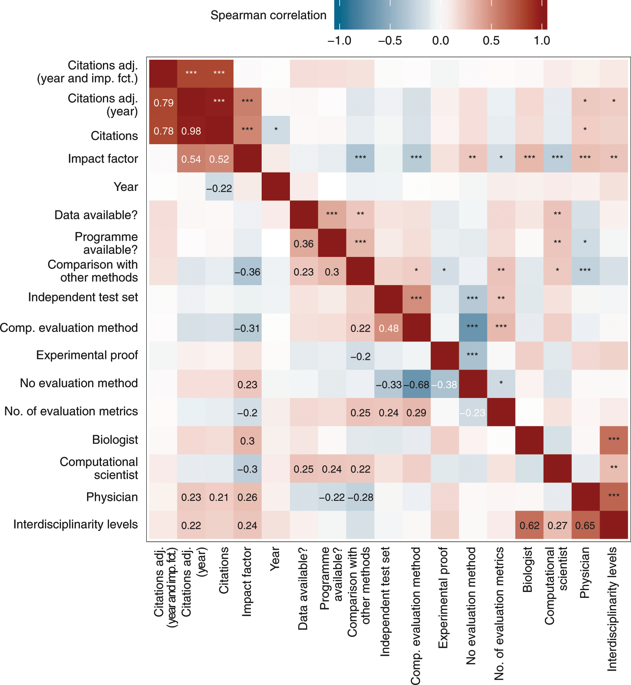Nature Machine Intelligence ( IF 18.8 ) Pub Date : 2020-01-13 , DOI: 10.1038/s42256-019-0139-8 Maria Littmann , Katharina Selig , Liel Cohen-Lavi , Yotam Frank , Peter Hönigschmid , Evans Kataka , Anja Mösch , Kun Qian , Avihai Ron , Sebastian Schmid , Adam Sorbie , Liran Szlak , Ayana Dagan-Wiener , Nir Ben-Tal , Masha Y. Niv , Daniel Razansky , Björn W. Schuller , Donna Ankerst , Tomer Hertz , Burkhard Rost

|
Machine learning (ML) has become an essential asset for the life sciences and medicine. We selected 250 articles describing ML applications from 17 journals sampling 26 different fields between 2011 and 2016. Independent evaluation by two readers highlighted three results. First, only half of the articles shared software, 64% shared data and 81% applied any kind of evaluation. Although crucial for ensuring the validity of ML applications, these aspects were met more by publications in lower-ranked journals. Second, the authors’ scientific backgrounds highly influenced how technical aspects were addressed: reproducibility and computational evaluation methods were more prominent with computational co-authors; experimental proofs more with experimentalists. Third, 73% of the ML applications resulted from interdisciplinary collaborations comprising authors from at least two of the three disciplines: computational sciences, biology, and medicine. The results suggested collaborations between computational and experimental scientists to generate more scientifically sound and impactful work integrating knowledge from both domains. Although scientifically more valid solutions and collaborations involving diverse expertise did not correlate with impact factors, such collaborations provide opportunities to both sides: computational scientists are given access to novel and challenging real-world biological data, increasing the scientific impact of their research, and experimentalists benefit from more in-depth computational analyses improving the technical correctness of work.
中文翻译:

通过跨专业领域的合作,提高了生物学和医学机器学习的有效性
机器学习(ML)已成为生命科学和医学的重要资产。我们从2011年至2016年期间从26个不同领域的17个期刊中选择了250篇描述ML应用的文章。两位读者的独立评估突出了三个结果。首先,只有一半的文章共享软件,64%的共享数据和81%的应用了任何类型的评估。尽管对于确保ML应用程序的有效性至关重要,但是这些方面在排名较低的期刊中得到了更多的满足。其次,作者的科学背景极大地影响了技术方面的解决方式:可重复性和计算评估方法在计算合著者中更为突出。实验者更多地提供了实验证明。第三,73%的ML应用来自跨学科的合作,这些跨学科的合作包括来自以下三个学科中的至少两个的作者:计算科学,生物学和医学。结果表明计算和实验科学家之间的合作,以产生更科学的,更具影响力的工作,整合了来自两个领域的知识。尽管在科学上更有效的解决方案和涉及多种专业知识的合作并未与影响因素相关联,但这种合作为双方都提供了机会:计算科学家可以访问新颖且具有挑战性的现实世界生物数据,从而增加了他们的研究和实验学家的科学影响力受益于更深入的计算分析,从而提高了工作的技术正确性。











































 京公网安备 11010802027423号
京公网安备 11010802027423号